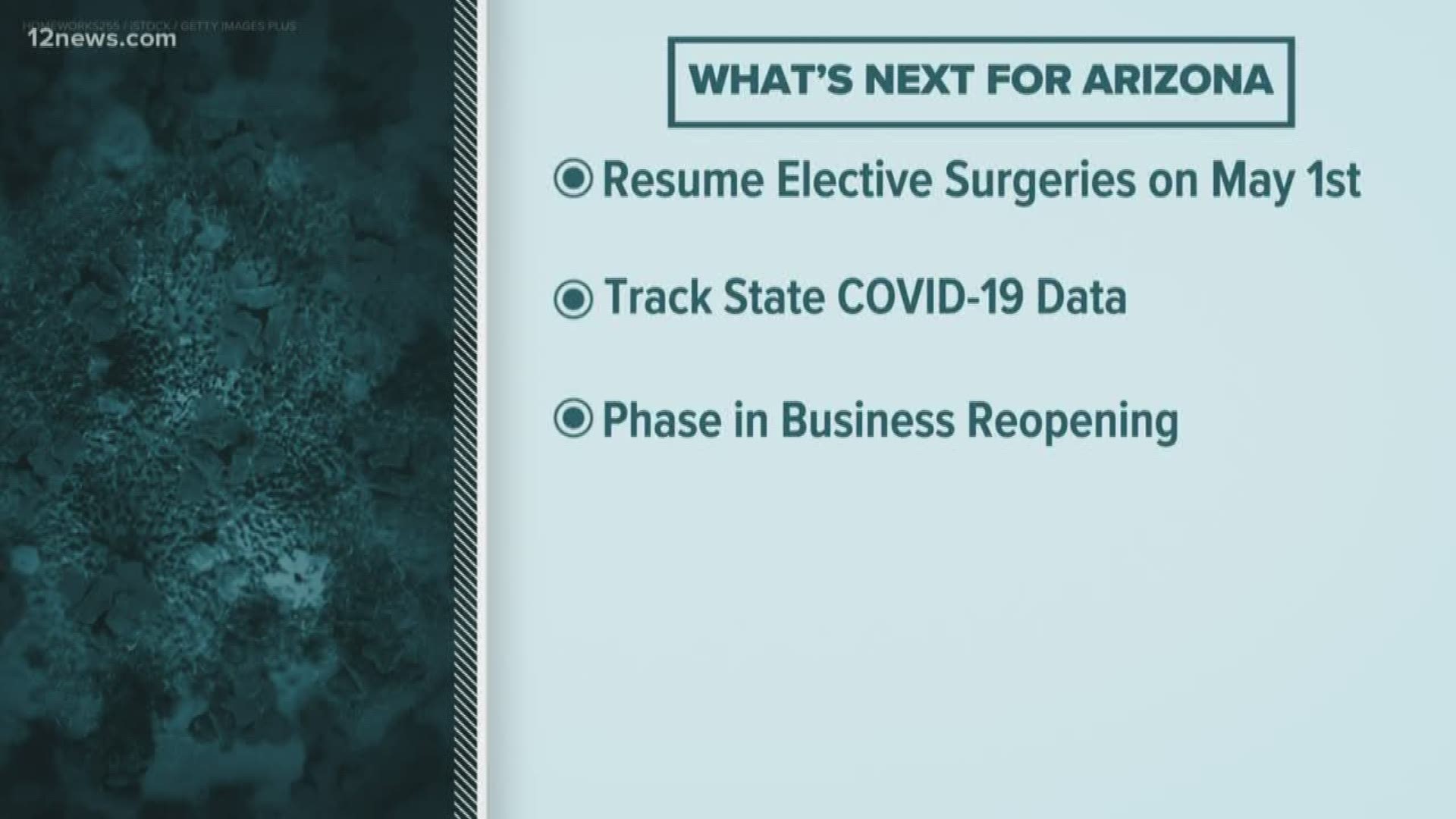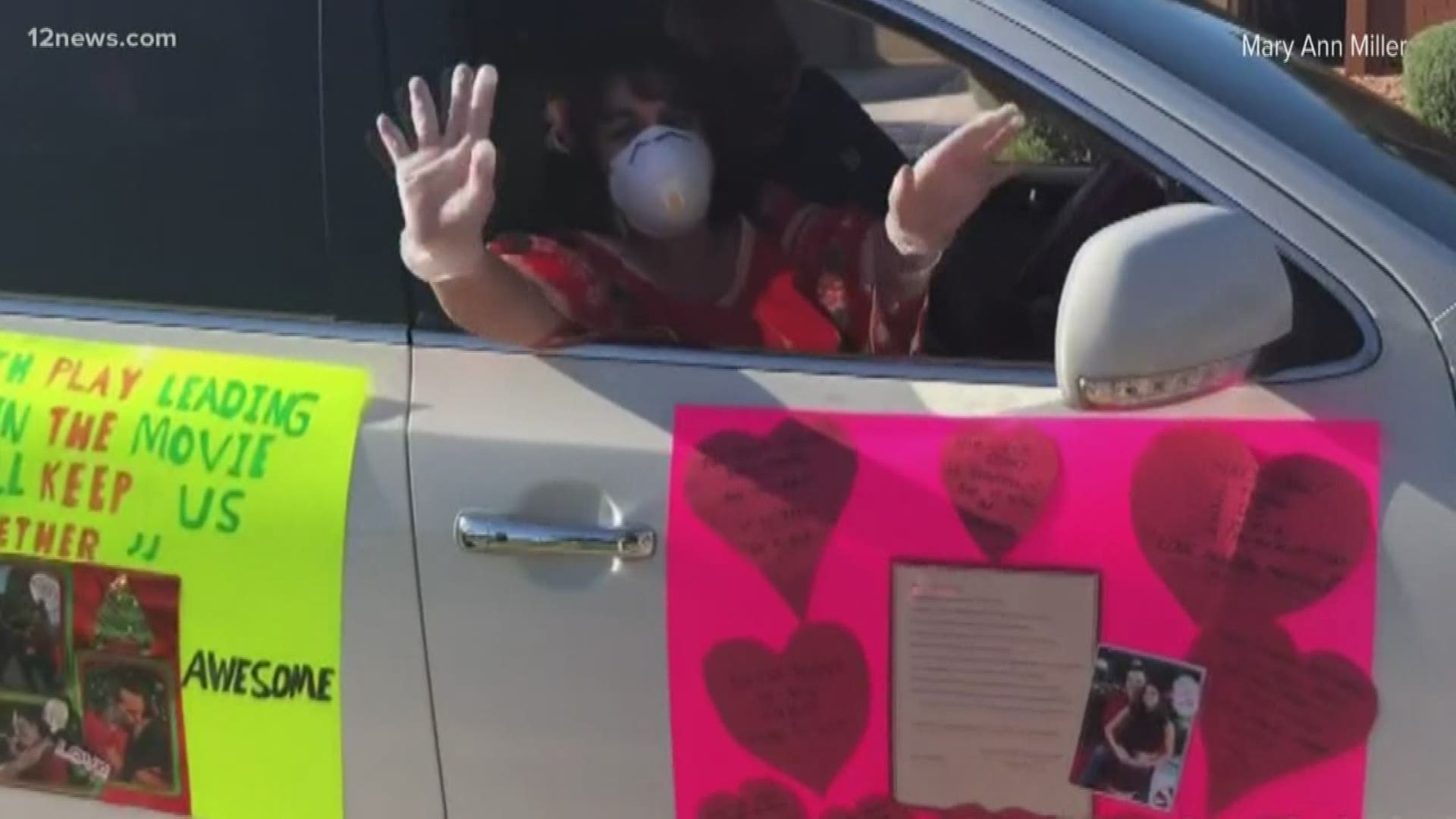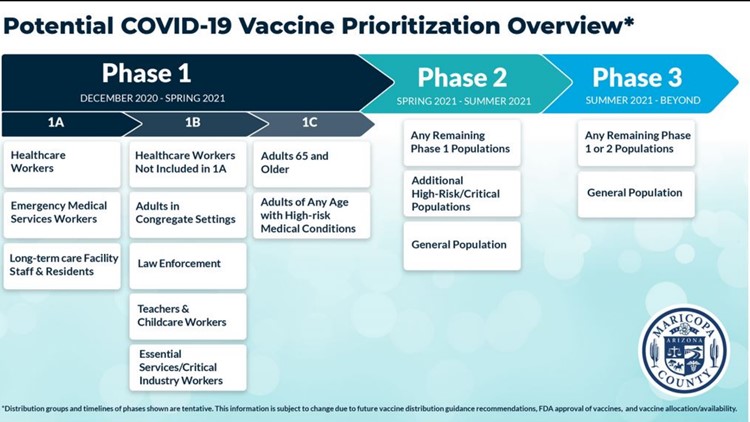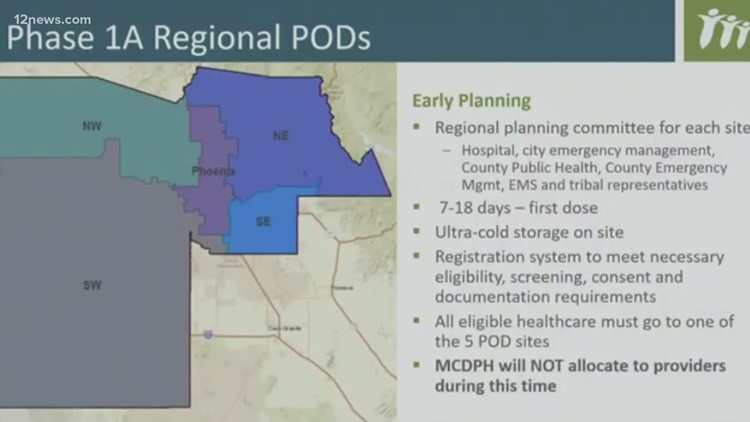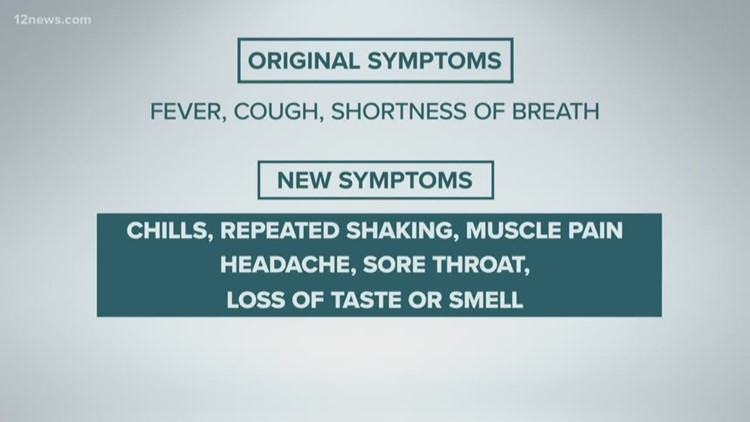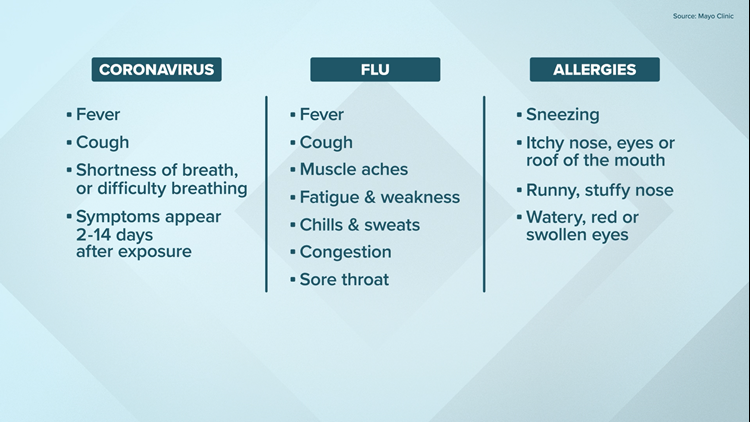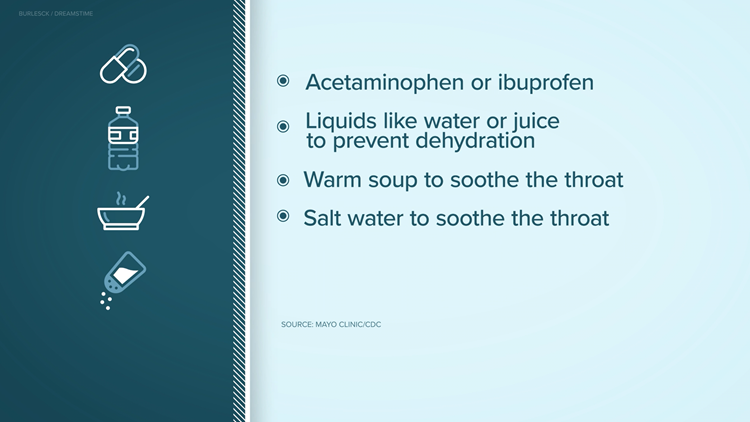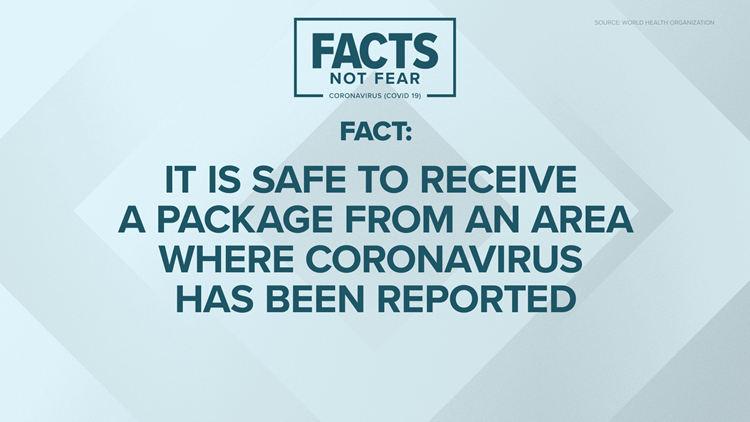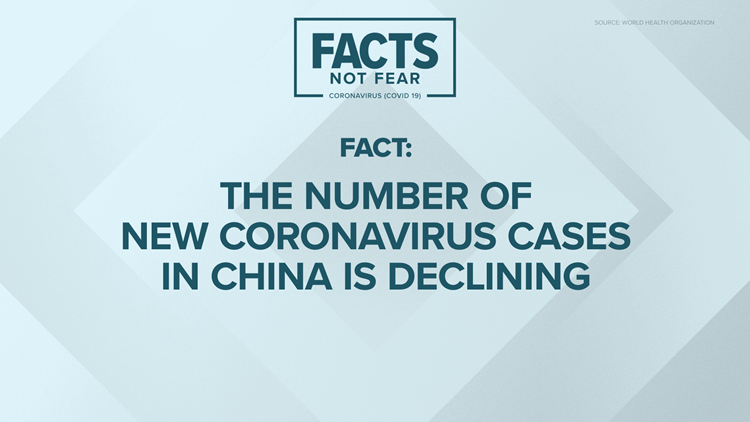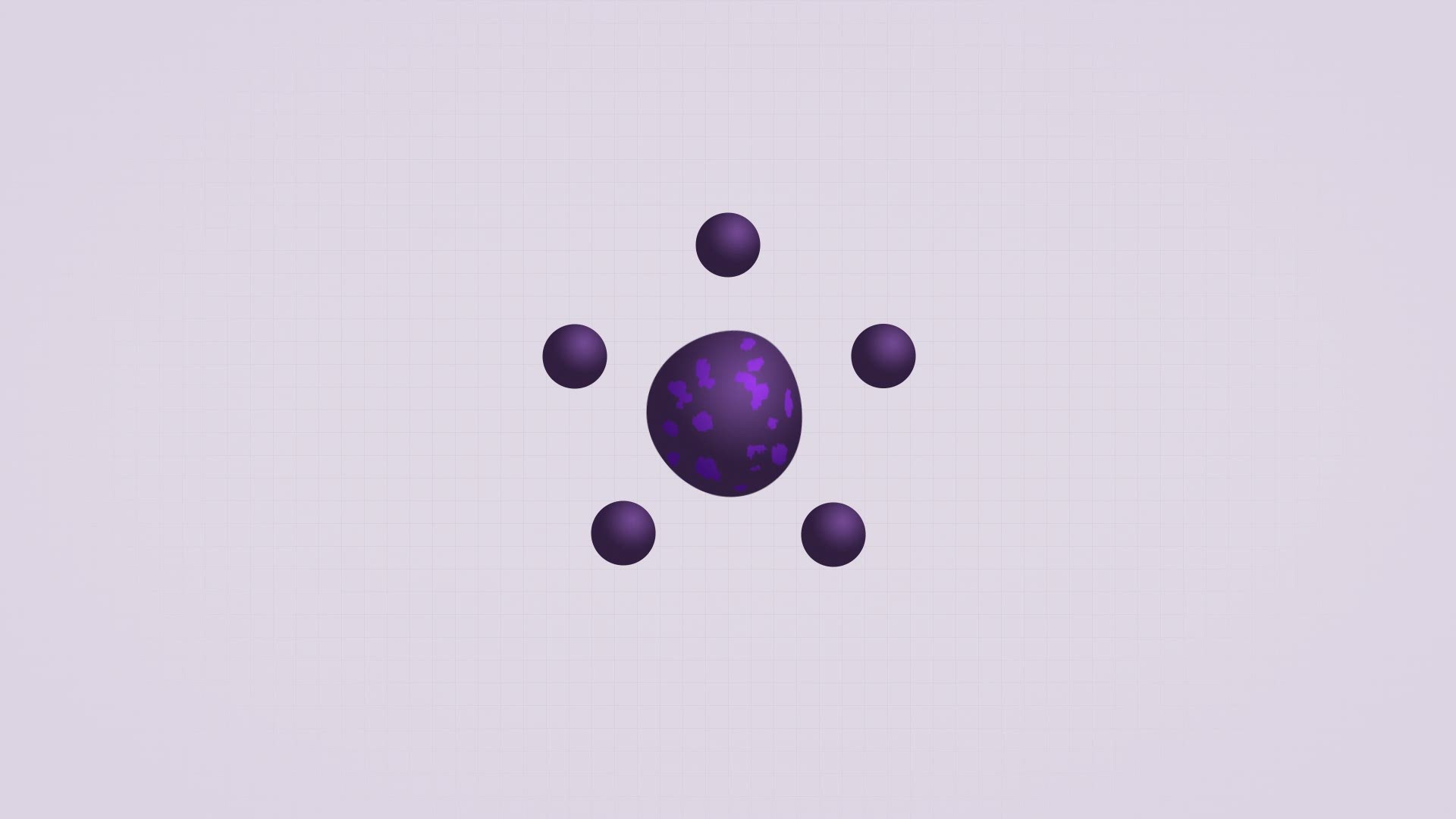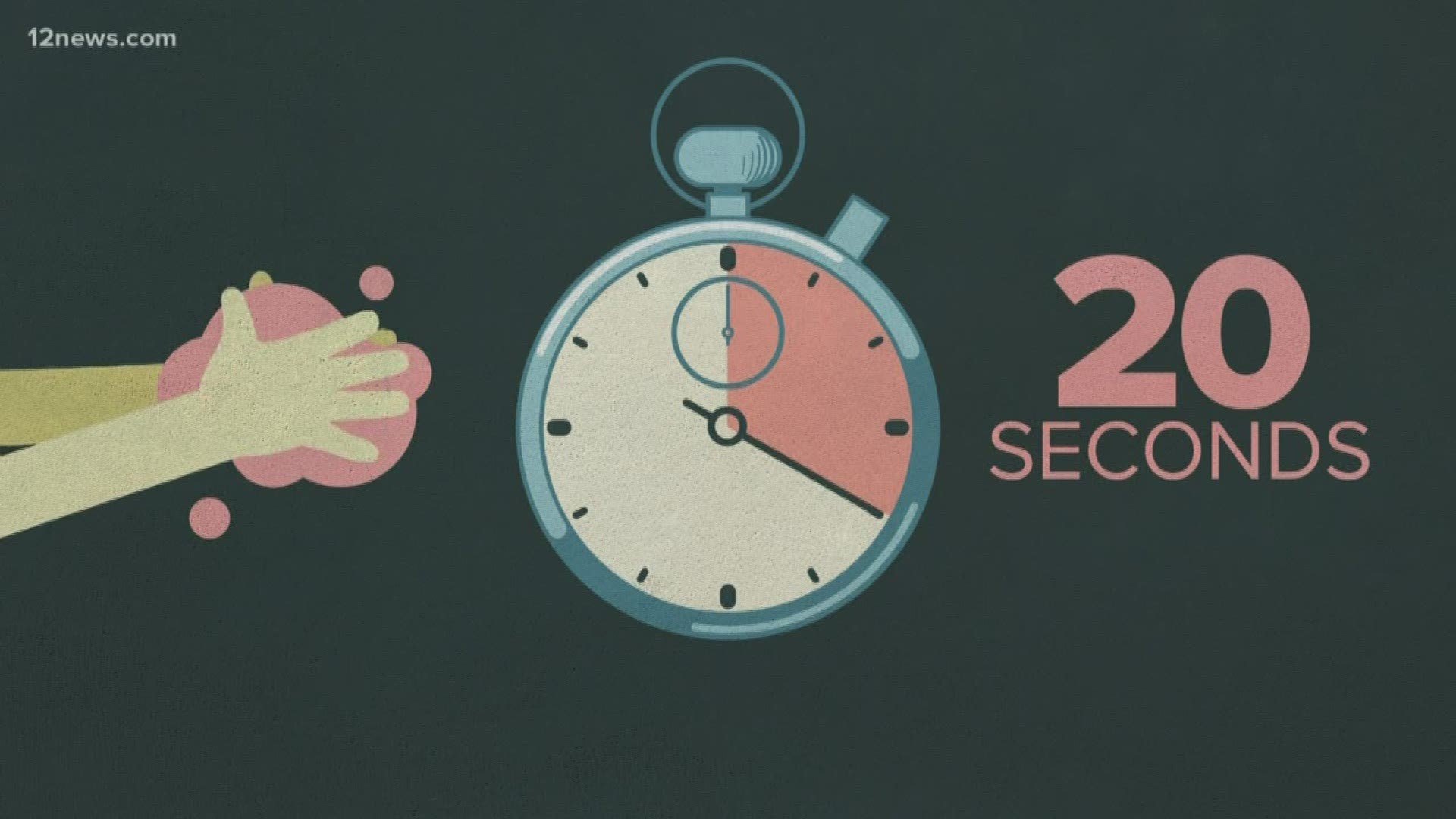There is a lot of news regarding the coronavirus in Arizona.
In an effort to track the changes, 12 News has started a daily live blog.
Here is the live blog for Wednesday, April 22.
Major updates:
- There are now 5,459 confirmed cases of coronavirus in Arizona as of Wednesday morning.
- 229 people have died from the virus or complications related to the virus in Arizona, as of Wednesday morning.
- The state does not record how many people have recovered.
- Scroll down to see how many cases are in each ZIP code in Arizona.
- State Senator Lupe Contreras, his wife and four other family members tested positive for COVID-19
Need to know:
- Here's the national live blog for Wednesday, April 22
- Here’s how to get tested for coronavirus in Arizona
- Concern grows for people quarantined with abusers
- How to prepare for an unexpected hospitalization amid COVID-19 spread
There are now 5,459 confirmed cases of coronavirus in Arizona, 229 deaths
There are now 5,459 confirmed cases of coronavirus in Arizona, with 229 coronavirus-related deaths, according to the state's latest numbers.
Cases are up from 5,251 confirmed cases on Tuesday with 208 deaths.
One week ago, there were 3,962 cases and 142 deaths in Arizona.
Here's a county breakdown:
- Maricopa: 2,846
- Pima: 973
- Pinal: 283
- Coconino: 353
- Navajo: 527
- Apache: 235
- Mohave: 62
- La Paz: 6
- Yuma: 28
- Graham: 2
- Cochise: 31
- Santa Cruz: 28
- Yavapai: 72
- Gila: 10
- Greenlee: 2
Maricopa County has the most cases in the state. On Wednesday morning, the county reported 97 total deaths, up 13 from the previous day. Of the county's 2,842 cases, 18% have been hospitalized and 6% have been admitted to the intensive care unit.

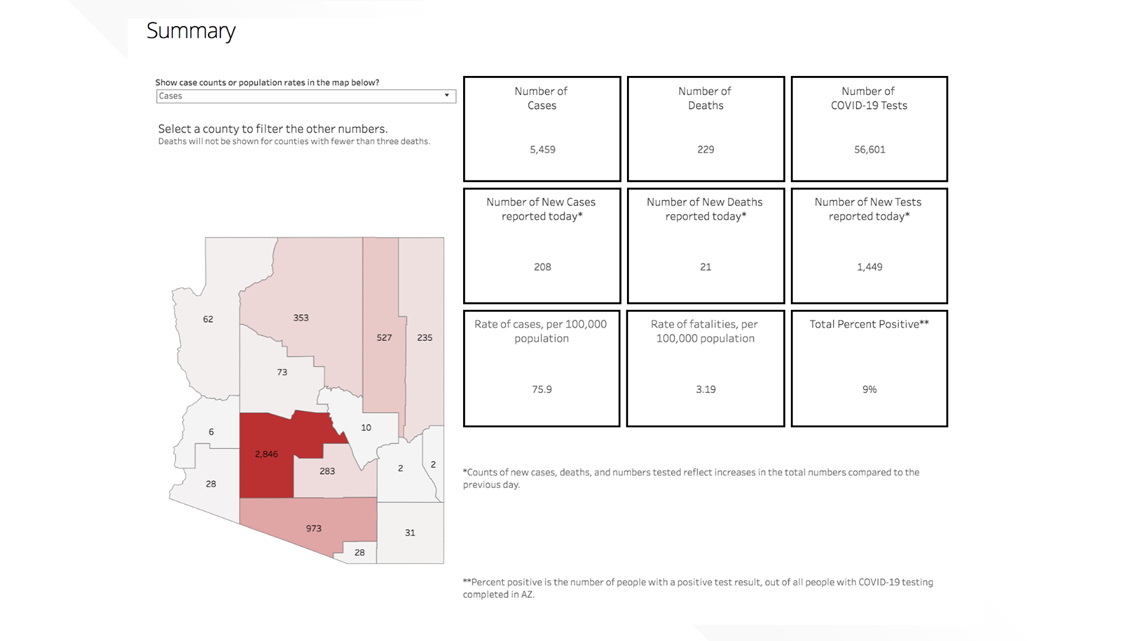
Arizona releases ZIP code locations of coronavirus cases, demographics
The Arizona Department of Health Services has released expanded data points regarding coronavirus cases in the state.
The AZDHS website now features the location of confirmed cases in Arizona by zip code.
You can see the current ZIP code map below and can find yours by clicking around or searching for your ZIP code in the top right of the map.
Of the 5,459 cases, 33% are white, non-Hispanic individuals, 17% are Hispanic or Latino and 14% are Native American. The race/ethnicity is unknown in 29% of cases.
Most cases in Arizona are in the 20-44 age group with 2,018. The 65 and older age group is next with 1,350 cases.

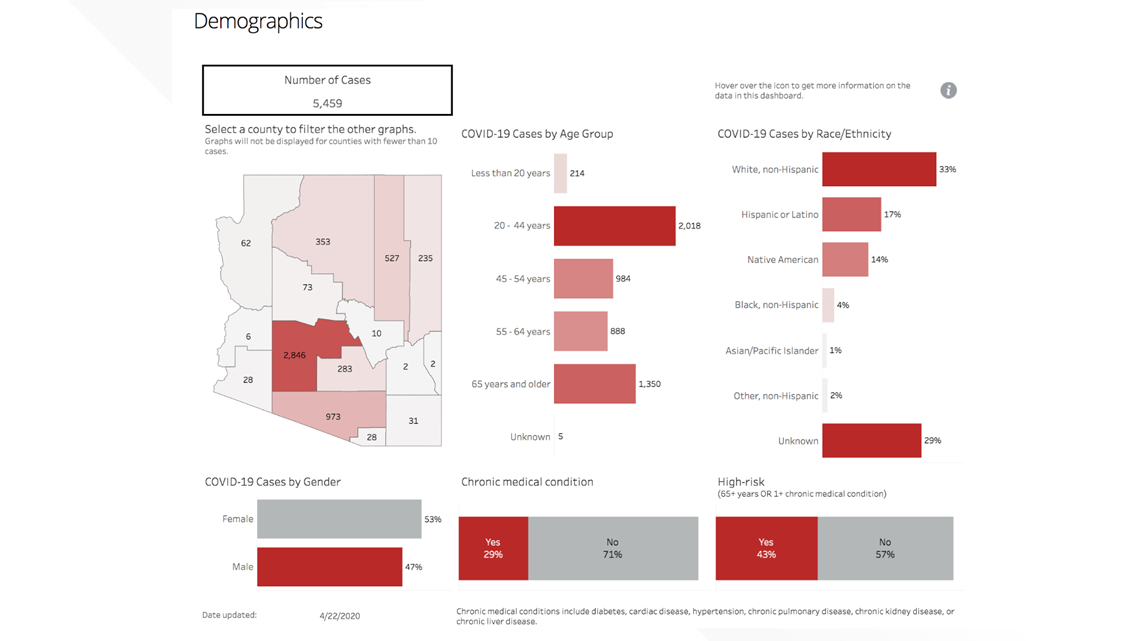
Of Arizona's 229 deaths, 48% were white, non-Hispanic individuals, 21% were Native Americans and 15% were Hispanic or Latino.
168 of the 229 deaths have been people 65 and older. Seven people in the 20-44 age group have died.

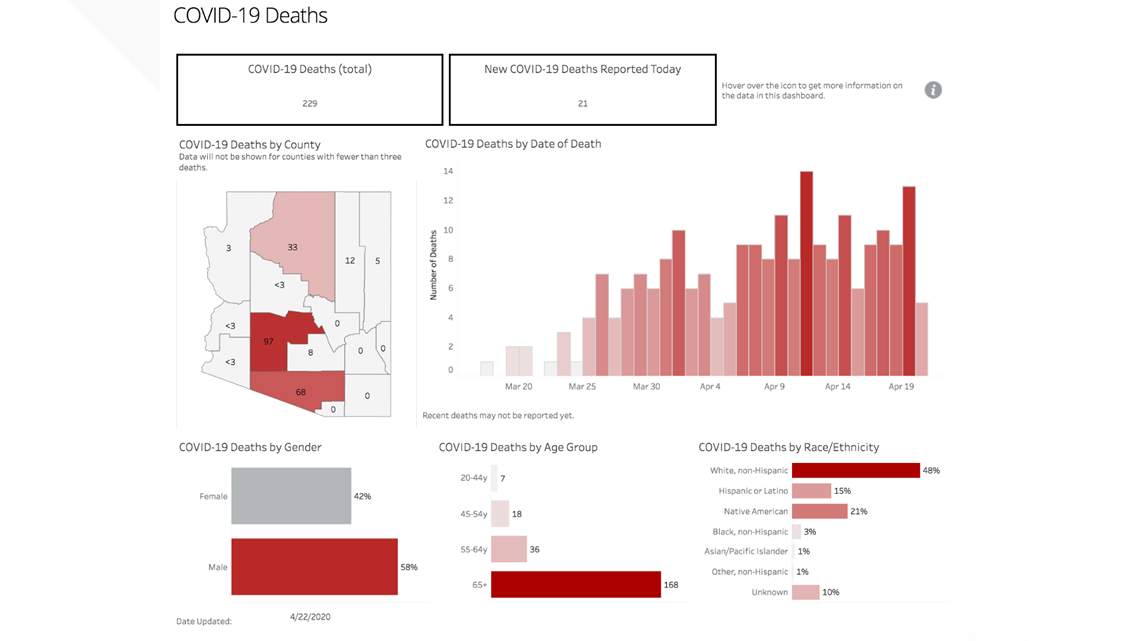
State senator and his family test positive for COVID-19
State Senator Lupe Contreras, his wife and four other family members tested positive for the coronavirus, he announced in a statement Wednesday.
Contreras said he and his wife got tested on April 20 after experiencing coughing, fever and headaches. Their tests came back positive the next morning.
Since then, Contreras and his wife have been quarantined in their bedroom, the statement says.
The statement says they speak to their children through the door, and every morning at 4, they go through the home wearing protective gear and sanitize every surface to make sure the children are safe.
"My only request is that people treat this pandemic as the very real threat that it is. We must have more testing for everyone who needs it, as well as contact tracing. In the meantime, I would encourage all of us to continue social distancing and tell our loved ones how much they mean to us," Contreras said.
1 more death, 76 new cases on the Navajo Nation
The Navajo Nation confirmed 76 new cases of COVID-19 and another death as of Wednesday.
In total, 1,282 people have tested positive, and 49 people have died.
5 more cases in Mohave County
Officials announced five more people tested positive for COVID-19 in Mohave County. The first four people live in the Kingman area. The other is in the Lake Havasu area.
All five people are in isolation and recovering at home.
The official county total is now 69 people infected with COVID-19: 26 in Lake Havasu City, including three deaths, 37 in Kingman and six in Bullhead City.
Elective surgeries resuming May 1
Gov. Doug Ducey announced Wednesday that elective surgeries will be allowed to resume in Arizona next month if hospitals can show they have the necessary PPE.
Ducey says the state has dramatically increased ICU and hospital bed capacity during the COVID-19 pandemic and is ready.
Death toll may be 69% higher in Maricopa County than current projections show, according to ACLU data
COVID-19 may claim the lives of nearly 1,000 more people in Maricopa County than previous projections showed if jail populations are not dramatically reduced, data released by the ACLU shows.
The study also showed that the death toll for the entire nation could be 100,000 deaths higher than predicted due to failures in reducing jail and prison populations.
Arizona health officials say hospitalization peak estimated around May 22
The Arizona Department of Health Services said in a public blog post that updated modeling shows that the number of coronavirus hospitalizations in the state will peak around May 22.
The department said it has partnered with experts from Arizona State University and the University of Arizona over the past several weeks to "develop a more targeted, Arizona-specific model."
Taking into account the current data, mitigation strategies, and potential summer effects on viral transmission, the department said recent baseline estimates a peak need for 600 hospital beds and 300 ICU beds around May 22.
The initial data the department received two weeks ago from the experts showed an estimated need for hospitalization of 15,000 individuals and 7,000 ICU beds needed.
The department said it is also working with the Centers for Disease Control and Prevention, the Assistant Secretary for Preparedness and Response and Federal Emergency Management Agency to develop modeling based on projection formulas developed by the Johns Hopkins University.
The federal model takes into account the current data from the state as well as the mitigation strategies Arizona has put into place. It has not been publicly shared due to the lack of authorization from the federal partners.
This model predicts our peak resource utilization to occur around June 11, assuming our mitigation strategies are lifted at the end of the stay-at-home order on April 30.
"Given that our goal was to reduce transmission of COVID-19, if this model holds true, this later peak would reflect the success of those mitigation strategies," the department wrote.
"Its projections, even with the mitigation strategies lifted, predict that our current resources, including inpatient beds, ICU beds, and ventilators, will meet a healthcare surge due to COVID-19. This model appears the most realistic and the predictions are reassuring."
The department said the model projections "vary widely and are highly sensitive to our mitigation strategies."
"All of our efforts to date have decreased the transmission of COVID-19 in our community and helped our healthcare system increase resource capacity to meet Arizona’s healthcare needs," it continued.
"While most of the models show that we currently have the capacity to meet the healthcare demands for Arizona, it is the responsibility of public health to plan for the worst-case scenario."
The department said it is working on developing plans for alternate care sites, such as the one at St. Luke’s Hospital, and facilitating the Arizona Surge Line to help coordinate transfers of patients to prevent surge at any one hospital.
"As the data evolves, so will our plans," the department wrote.
"While the models may try to predict what lies ahead, they are simply predictions. Moving forward, the best course of action is to continue using all of our real-time, Arizona specific data to assess the health of our healthcare system and evaluate the trend of our cases to make decisions that are best for Arizona."
Navajo Nation to extend closure of government buildings
The Navajo Nation has extended its closure of government offices and related entities until May 17.
It was ordered to help slow and reduce the spread of COVID-19 on the Navajo Nation.
The written order states, “All Navajo Nation Divisions, Departments, Programs, Offices, non-governance certified Chapters, Enterprises, and Navajo casinos shall follow the direction of the Public Health Emergency Orders requiring all Navajo citizens to limit their movement which means staying at home and leaving for Essential Activities only; and comply with the curfew hours by staying home between the house of 8:00 p.m. and 5:00 a.m. MDT and complying with weekend or other curfew hours.”
The Navajo Nation’s shelter-in-place order remains in effect, as well as the daily curfew from 8:00 p.m. to 5:00 a.m.
The Navajo Nation will also implement another 57-hour weekend curfew beginning on Friday at 8:00 p.m. until Monday at 5:00 a.m.
“We’re not letting our guard down – now is not the time. We’re seeing a slight flattening of the curve, but we have to remain vigilant. As the leaders of the Navajo Nation, we are doing everything we can to help save as many lives as possible. Government offices will be closed, but essential personnel will continue their duties and essential government functions will continue,” said President Jonathan Nez.
Coca-Cola donates water to Navajo Nation
The Arizona Department of Emergency and Military Affairs and Swire Coca-Cola coordinated to provide 30,000 liters of Dasani Water and two pallets of Coca-Cola beverages to the Navajo Nation.
The two truckloads of supplies, donated by Swire Coca-Cola, were delivered to Nakai Hall at the Window Rock Fairgrounds on the Navajo Nation.
“The Navajo Nation is very thankful for the coordination of Governor Ducey and Swire Coca-Cola to contribute bottled water for our Navajo people,” said Navajo Nation President Jonathan Nez.
“It’s through great partnerships such as this, that we will overcome COVID-19. We are stronger and more resilient when we unite and work together.”
COVID-19 is believed to be primarily spread through coughs or sneezes.
It may be possible for the virus to spread by touching a surface or object with the virus and then a person touching their mouth, nose or eyes, but this is not thought to be the main method of spread, the CDC says.
You should consult your doctor if you traveled to an area currently affected by COVID-19 and feel sick with fever, cough or difficulty breathing.
There is no vaccine for the coronavirus, so the best way to prevent COVID-19 and other respiratory diseases is to:
- Avoid close contact with people who are sick.
- Avoid touching your eyes, nose, and mouth.
- Stay home when you are sick.
- Cover your cough or sneeze with a tissue, then throw the tissue in the trash.
- Clean and disinfect frequently-touched objects and surfaces using a regular household cleaning spray or wipe.
- Wash your hands often with soap and water for at least 20 seconds. If soap and water are not readily available, use an alcohol-based hand sanitizer.
You can text FACTS to 602-444-1212 to receive more information on the coronavirus and to ask questions.

